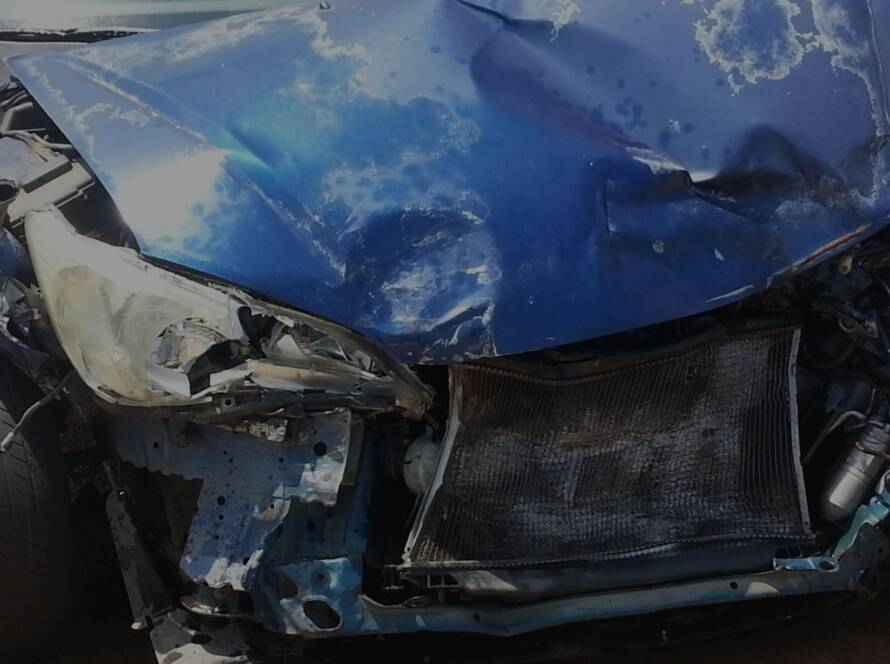North Las Vegas has seen a concerning uptick in motorcycle accidents lately. Just last year, we experienced a 15% increase compared to 2022. I’ll never forget witnessing a crash at a busy intersection last summer – the sight of the fallen rider and scattered debris really drove home how crucial it is to understand motorcycle safety and accident procedures in our city.
Let’s dive into the key areas you need to know about to stay safe on two wheels in North Las Vegas:
Understanding the Legal Landscape
The legal scene for motorcycle accidents in North Las Vegas has shifted quite a bit in 2024. We’ve got updated traffic laws, new insurance requirements, and some recent legislative changes that could impact your rights on the road. It’s crucial to get familiar with all this so you can protect yourself and ensure fair compensation if you ever find yourself in an accident.
One big thing to remember is Nevada’s comparative negligence law. You can still recover damages as long as you’re less than 51% at fault for the accident. That’s a key point that could make or break your case.
Another important detail – you’ve got a two-year window from the date of the accident to file a motorcycle accident claim in Nevada. Miss that deadline, and you could be out of luck when it comes to seeking compensation through the courts.
To give you an idea of the scale we’re dealing with, the Nevada Traffic Safety Crash Facts reported 87 motorcycle fatalities in Nevada in 2020, with a whopping 63 of those happening right here in Clark County. That’s a sobering statistic that underscores why we need to take this stuff seriously.
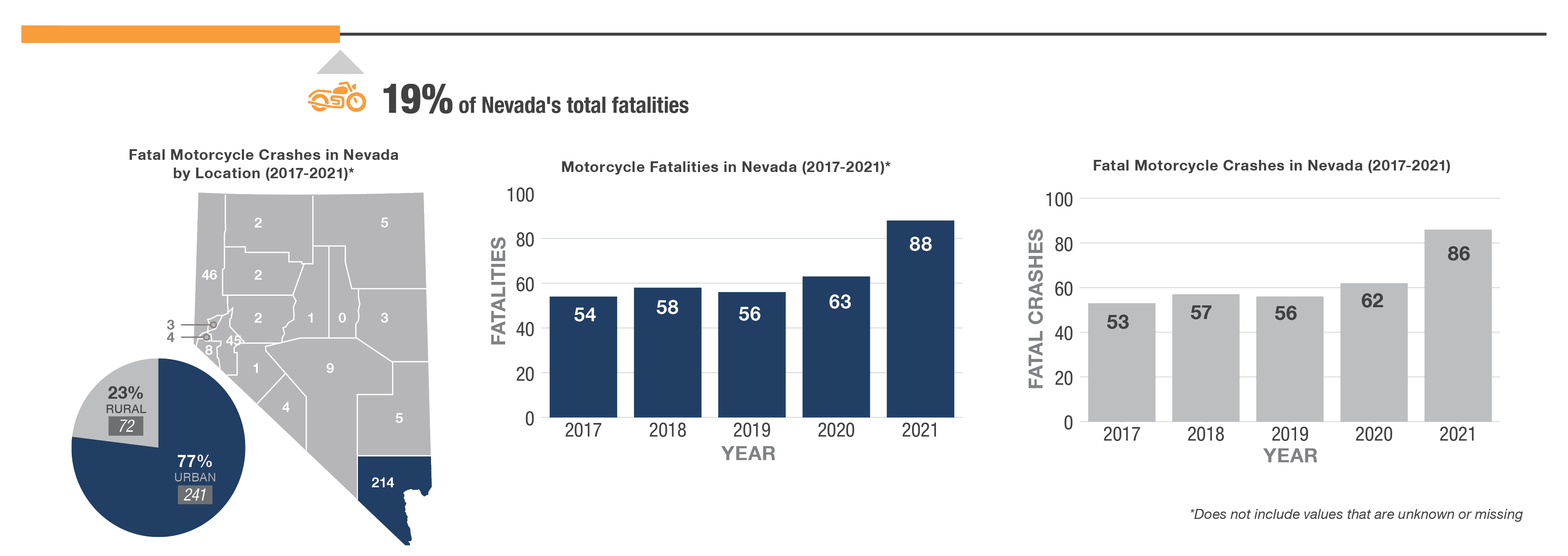
Source: zerofatalitiesnv.com
Updated Traffic Laws for Motorcyclists
Staying on top of the latest traffic regulations for motorcyclists in North Las Vegas is crucial. We’ve got some new rules around lane splitting, helmet requirements, and safety measures that came into play in 2024. Knowing these laws inside and out can help you avoid tickets and strengthen your position if you ever end up in an accident.
Here’s the deal with lane splitting – it’s in a bit of a legal gray area in Nevada right now. It’s not explicitly legal or illegal, which can make things tricky. If you decide to lane split, you’re taking a risk that could impact how insurance companies and law enforcement view an accident.
As for helmets, Nevada law is crystal clear – all motorcycle riders and passengers must wear DOT-approved helmets. No exceptions. And it’s not just about avoiding a ticket – wearing a helmet can significantly impact your ability to recover damages if you’re in an accident.
We’ve also seen some new legislation that’s cracking down on drivers who don’t yield to motorcyclists. It’s a step in the right direction, but we still need to stay vigilant out there.
Lane Splitting Guidelines
Lane splitting is a hot topic among riders in Nevada. While it’s not officially sanctioned, it’s not explicitly illegal either. If you’re considering it, you need to be extremely cautious. Law enforcement and insurance companies often take a dim view of lane splitting if there’s an accident.
The Nevada legislature has been kicking around bills to legalize lane splitting, but as of 2024, none have made it through. If you do decide to lane split, keep your speed in check – no more than 10 mph faster than the surrounding traffic. And it’s generally only practiced in slow-moving or stopped traffic.
I heard about a case recently where a motorcyclist lane splitting on Las Vegas Boulevard during rush hour got sideswiped by a car changing lanes. The insurance company initially denied the claim, citing the lane splitting as a contributing factor. It just goes to show how tricky the legal waters can be when it comes to this practice.
Helmet Laws and Safety Equipment
Let’s talk helmets. Nevada law doesn’t mess around here – you and any passengers must wear DOT-approved helmets. Period. You also need to wear protective eyewear unless your bike has a windscreen. These aren’t just safety measures – they can seriously impact liability if you’re in an accident.
DOT-approved helmets have to meet the Federal Motor Vehicle Safety Standard (FMVSS) 218. It’s not just about avoiding a fine – if you’re not wearing a helmet, it could affect your ability to recover damages in an accident.
Beyond helmets, consider gearing up with protective clothing like leather jackets, gloves, and boots. They might not be required by law, but they can make a huge difference if you go down.

Source: genthelaw.com
Insurance Requirements and Coverage
Let’s break down the insurance situation for motorcyclists in Nevada. The state requires us to carry liability insurance with minimum limits of 25/50/20. That means $25,000 per person for bodily injury, $50,000 per accident for bodily injury, and $20,000 for property damage.
But here’s the thing – those minimums might not cut it if you’re in a serious accident. I always recommend going beyond the basics. Uninsured/underinsured motorist coverage isn’t mandatory, but it’s a smart move. And medical payments coverage can be a lifesaver for immediate medical expenses, regardless of who’s at fault.
Here’s a quick breakdown of coverage types and recommended limits:
| Coverage Type | Minimum Requirement | Recommended |
|---|---|---|
| Bodily Injury | $25,000 per person / $50,000 per accident | $100,000 per person / $300,000 per accident |
| Property Damage | $20,000 per accident | $100,000 per accident |
| Uninsured/Underinsured Motorist | Not required | Match liability limits |
| Medical Payments | Not required | $5,000 – $10,000 |
Uninsured/Underinsured Motorist Coverage
This coverage is a real game-changer if you’re hit by a driver who doesn’t have enough insurance to cover your damages. It’s not required in Nevada, but I can’t stress enough how important it is.
Typically, uninsured motorist coverage matches your liability limits. It’s not just for accidents with uninsured drivers – it can also protect you in hit-and-run situations. Some policies even offer uninsured motorist property damage coverage for your bike.
Here’s a sobering stat – the Insurance Research Council found that about 10.6% of Nevada drivers were uninsured in 2019. That’s one in ten drivers on the road without proper coverage. It really drives home why uninsured motorist coverage is so crucial.
Recent Legislative Changes
The legal landscape for motorcyclists is always evolving, and 2024 has brought some significant changes. We’ve seen new laws that increase penalties for distracted driving, which is a major cause of motorcycle accidents. There’s also ongoing discussion about implementing mandatory motorcycle safety courses for new riders.
One positive development is that the state has recently allocated more funds for motorcycle safety awareness campaigns. It’s a step in the right direction, but we still need to stay vigilant and advocate for our rights as riders.
These legislative changes can affect everything from traffic rules to insurance requirements and compensation limits. It’s crucial to stay informed and understand how these changes might impact you if you’re involved in an accident.
Immediate Steps After a Motorcycle Accident
If you find yourself in a motorcycle accident in North Las Vegas, knowing what to do in those crucial first moments can make a huge difference. Your actions immediately following the crash can significantly impact any potential legal proceedings down the line.
First things first – document everything. I mean everything. Take photos of the accident scene, get contact info from witnesses, and make sure you get a copy of the police report. These details might seem minor in the moment, but they can be crucial if you end up in court or dealing with insurance companies.
Speaking of police reports, always make sure one is filed, even for minor accidents. It provides an official account of what happened, which can be invaluable later on.
A recent high-speed motorcycle crash in North Las Vegas made headlines and serves as a stark reminder of why following proper post-accident procedures is so important. You can read more about it here.
Safety and Medical Priorities
Your health comes first, always. Even if you think you’re fine, get checked out by a medical professional. Adrenaline can mask pain and symptoms immediately after an accident, and some injuries might not show up right away.
Don’t brush off medical care thinking you’re saving time or money. Those medical records can be crucial evidence if you need to file a personal injury claim later. Plus, following through with treatment plans and follow-up care is important both for your recovery and for any legal proceedings.
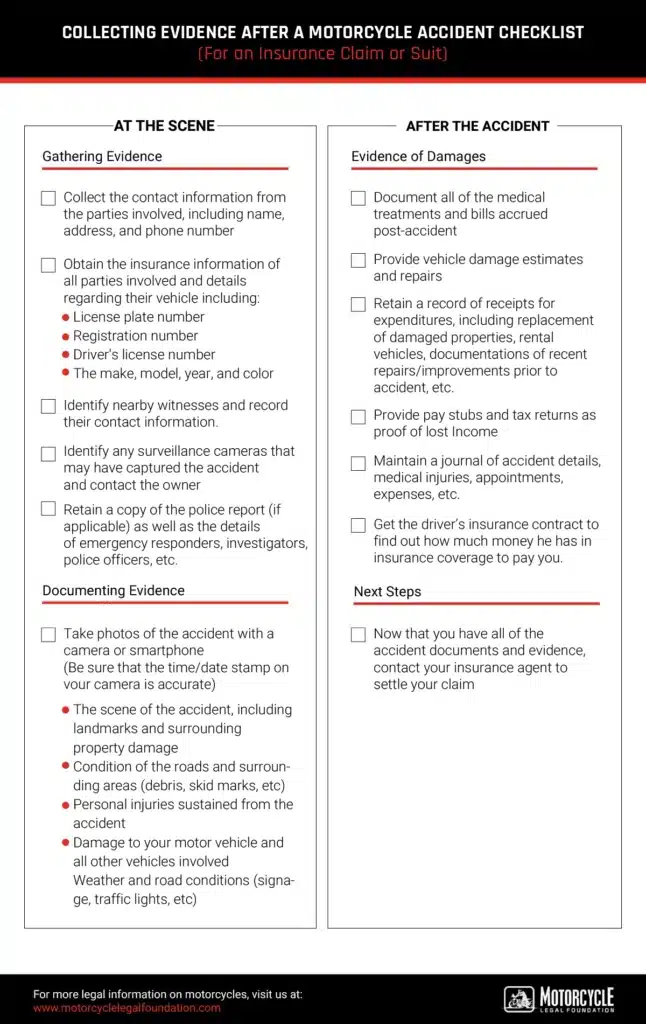
Source: motorcyclelegalfoundation.com
Documenting Injuries
Keep detailed records of all your medical treatments, diagnoses, and expenses related to the accident. These records will be essential for insurance claims and potential legal proceedings. Don’t forget to document any ongoing symptoms or limitations resulting from your injuries.
Request itemized bills and medical records from all healthcare providers you see. Keep a daily journal documenting your pain levels, limitations, and recovery progress. And make sure to save receipts for all out-of-pocket expenses related to your injuries, including transportation to medical appointments.
I heard about a case recently where a North Las Vegas motorcyclist was involved in what seemed like a minor collision. They declined medical attention at the scene, thinking they were fine. A few days later, they developed severe neck pain and headaches, which turned out to be whiplash. Because they didn’t seek immediate medical care, the insurance company disputed whether these injuries were actually related to the accident. It’s a perfect example of why immediate medical attention is so crucial.
Gathering Evidence at the Scene
If you’re able to, collecting evidence at the accident site can be incredibly valuable for your case. This evidence can be crucial in determining fault and proving the extent of damages. Remember, the more information you gather, the stronger your position will be in any subsequent legal proceedings.
Use your smartphone to take photos and videos of the accident scene. Get contact information from all parties involved and any witnesses. And don’t forget to look for any nearby surveillance cameras that might have captured the accident – that footage could be gold.
Photographic Evidence
When it comes to photos, be thorough. Capture wide-angle shots of the entire scene as well as close-ups of specific damages. Photograph any skid marks, debris, or road conditions that might have contributed to the accident. And if possible, take photos of your injuries immediately after the accident and during the healing process.
These visual records can provide crucial context and details that might be forgotten or disputed later. You never know which small detail might end up being the key piece of evidence in your case.
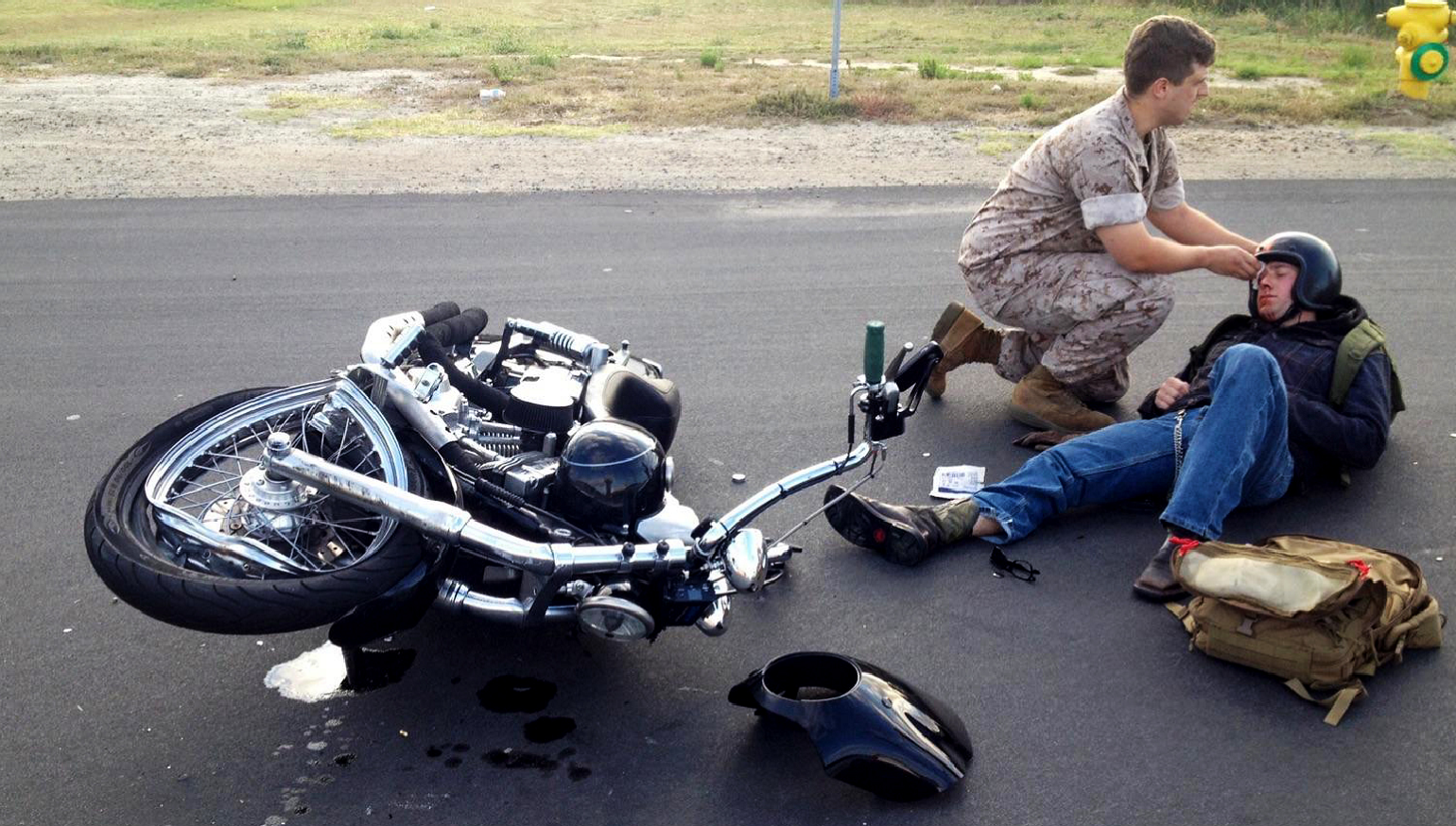
Source: revzilla.com
Witness Information
Witness testimonies can be incredibly valuable in corroborating your account of the events and establishing fault. If there are any witnesses willing to provide statements about the accident, get their contact information. Be polite and brief in your interactions – remember, they’re doing you a favor by agreeing to help.
If possible, ask witnesses if they’d be willing to provide a brief written statement at the scene. Collect names, phone numbers, and email addresses of all witnesses. And if you can, record video statements from witnesses with their permission.
Reporting the Accident
Understanding the proper procedures for reporting a motorcycle accident in North Las Vegas is crucial. Timely and accurate reporting can make a big difference for insurance claims and potential legal action.
In Nevada, you must report any accident resulting in injury, death, or property damage over $750. If the accident isn’t investigated by law enforcement, you need to file an SR-1 form with the Nevada DMV within 10 days. And don’t forget to notify your insurance company about the accident as soon as possible.
Here’s a sobering statistic – according to the Nevada Department of Transportation’s Five-Year Crash Data Map, there were 243 crashes at the intersection of East Craig Road and North 5th Street in North Las Vegas over a five-year period. It’s a stark reminder of why proper accident reporting and safety measures are so important.
If you want to learn more about handling accident claims in Las Vegas, check out our guide on Las Vegas bicycle accidents. While it’s focused on bicycles, many of the principles apply to motorcycle accidents as well.
Police Report Filing
Always make sure a police report is filed and get a copy for your records. This document can be crucial in legal proceedings and insurance claims. The police report provides an official account of the accident and can include important details you might have missed.
When the police arrive, get the responding officer’s name and badge number. Ask for the incident or report number so you can easily obtain a copy later. And when you get that copy, review it carefully for accuracy. If you notice any errors, request amendments right away.

Source: lassoinjurylaw.com
Navigating Insurance Claims and Legal Proceedings
Dealing with insurance claims and potential legal action after a motorcycle accident can be a complex process. In 2024, we’re seeing some new wrinkles in how these cases are handled. Understanding these processes can help you avoid common pitfalls and maximize your chances of a favorable outcome.
One thing to keep in mind – insurance companies often try to settle quickly for less than your claim is worth. They’re businesses, after all, and their primary goal is to minimize payouts. Don’t feel pressured to accept the first offer that comes your way.
If your case does end up going to court, be prepared for the discovery process. This is where both sides exchange information about the witnesses and evidence they’ll present at trial. It can be time-consuming, but it can also uncover important evidence to support your case.
Here’s a quick overview of what you might expect:
| Stage | Key Actions | Potential Challenges |
|---|---|---|
| Initial Claim Filing | Report accident to insurance, provide documentation | Delays, request for unnecessary information |
| Claim Investigation | Cooperate with adjuster, provide evidence | Disputes over fault, lowball offers |
| Settlement Negotiation | Present demand, counter offers | Pressure to settle quickly, inadequate compensation |
| Litigation (if necessary) | File lawsuit, engage in discovery | Lengthy process, high costs, uncertain outcome |
Dealing with Insurance Companies
When it comes to dealing with insurance adjusters, you need to be on your toes. These folks are trained to minimize payouts, and they have a whole bag of tricks to do it. One common tactic is to use your own recorded statements against you. That’s why it’s crucial to be careful about what you say and how you say it.
Another thing to watch out for – be cautious about signing any medical releases without consulting an attorney first. Insurance companies might use these to access your entire medical history, looking for ways to argue your injuries aren’t accident-related.
Keep meticulous records of all your communications with insurance companies. This includes dates, times, names of who you spoke with, and what was discussed. These details can be invaluable if there are disputes later on.
Recorded Statements
When it comes to giving recorded statements to insurance companies, proceed with caution. These statements can be a double-edged sword, potentially undermining your claim if not handled carefully. It’s often wise to consult with an attorney before providing any formal statement.
Remember, you have the right to decline giving a recorded statement. If you do decide to give one, stick to the facts and avoid speculation. Consider having your attorney present during any recorded statement to ensure your rights are protected.
I recently heard about a case where a North Las Vegas motorcyclist, eager to resolve their claim quickly, gave a recorded statement without legal counsel. In their statement, they inadvertently downplayed their injuries, saying they felt “okay” despite later developing severe back pain. The insurance company seized on this statement to argue that the injuries weren’t as serious as claimed, significantly reducing the settlement offer.
Statute of Limitations
Time is of the essence when it comes to filing a motorcycle accident claim in Nevada. As of 2024, you generally have two years from the date of the accident to file a personal injury lawsuit. Miss this deadline, and you could lose your right to seek compensation through the court system.
It’s worth noting that the statute of limitations may differ for property damage claims. Additionally, certain circumstances can “toll” or pause the statute of limitations. For instance, if the injured party is a minor, the clock might not start ticking until they turn 18.
Claims against government entities often have shorter filing deadlines, sometimes as little as six months. If your accident involved a government vehicle or occurred on poorly maintained public property, you’ll need to act quickly to preserve your rights.
Comparative Negligence in Nevada
Nevada’s comparative negligence laws can significantly impact your case, especially if you’re found partially at fault for the accident. The state follows a modified comparative negligence rule, meaning you can recover damages as long as you’re less than 51% at fault for the accident.
Here’s the kicker – your compensation will be reduced by your percentage of fault. For example, if you’re awarded $100,000 in damages but found to be 20% at fault, you’d only receive $80,000. And if you’re found to be 51% or more at fault, you can’t recover any damages at all.
Determining fault percentages often requires expert testimony and accident reconstruction. It’s a complex process that can involve analyzing physical evidence, witness statements, and even traffic camera footage.
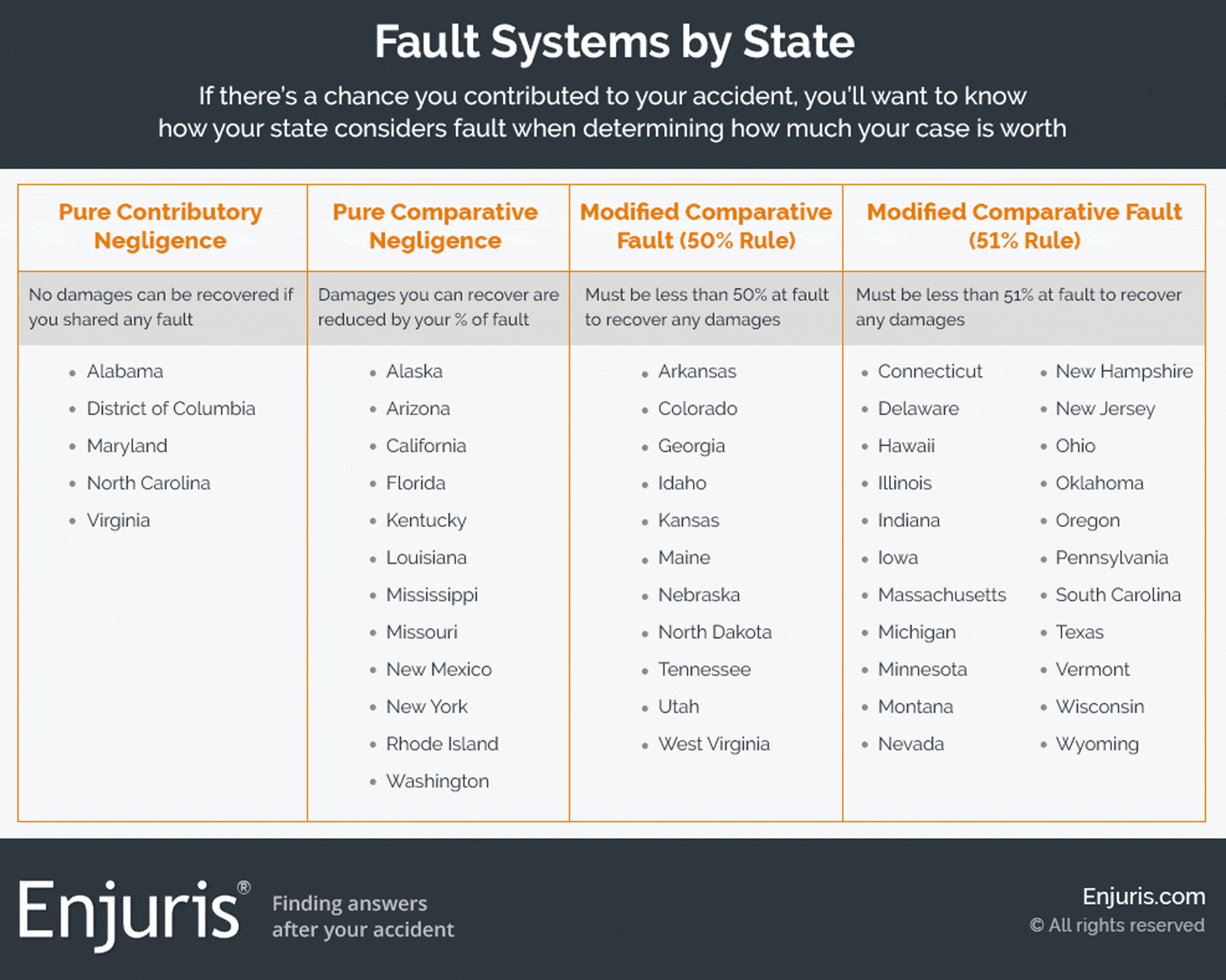
Source: enjuris.com
Emerging Trends in Motorcycle Safety and Accident Prevention
The world of motorcycle safety is evolving rapidly, and North Las Vegas is no exception. In 2024, we’re seeing some exciting developments in safety technology and accident prevention strategies that could make a real difference for riders in our city.
One of the most promising trends is the rise of AI-powered collision avoidance systems in motorcycles. These systems use advanced sensors and algorithms to detect potential hazards and alert riders or even take corrective action in some cases.
We’re also seeing smart road infrastructure being implemented in parts of North Las Vegas. This includes things like intelligent traffic signals that can detect motorcycles more accurately and adjust timing to improve safety at intersections.
For more insights on preventing accidents and staying safe on the road, take a look at our guide on Las Vegas car accidents. While it’s focused on cars, many of the principles apply to motorcycles as well.
Advanced Safety Technologies
The latest safety features for motorcycles are truly impressive. From advanced braking systems to stability control, these technologies are changing the game when it comes to rider safety.
Anti-lock Braking Systems (ABS) are now standard on many motorcycle models, helping riders maintain control during hard braking. Traction control systems are another key feature, preventing wheel spin in various road conditions.
One technology I’m particularly excited about is adaptive headlights. These smart lights adjust their beam based on the bike’s lean angle, improving visibility on curves and in low-light conditions. It’s a simple concept, but it can make a huge difference in preventing nighttime accidents.
Smart Helmet Innovations
The humble motorcycle helmet is getting a high-tech makeover. Cutting-edge helmet technologies are enhancing visibility and communication for riders in ways we could only dream of a few years ago.
Some of the most advanced helmets now feature augmented reality (AR) displays that can project navigation and safety alerts directly onto the visor. Imagine having your speed, navigation directions, and even blind spot warnings right in your field of view – it’s like something out of a sci-fi movie, but it’s becoming reality.
Built-in action cameras are another feature gaining popularity. These can be useful for recording your rides for fun, but they can also provide crucial evidence if you’re involved in an accident.
Advanced noise-canceling technology is another game-changer. It can reduce wind noise while still allowing important sounds through, helping riders stay alert without being overwhelmed by road noise.
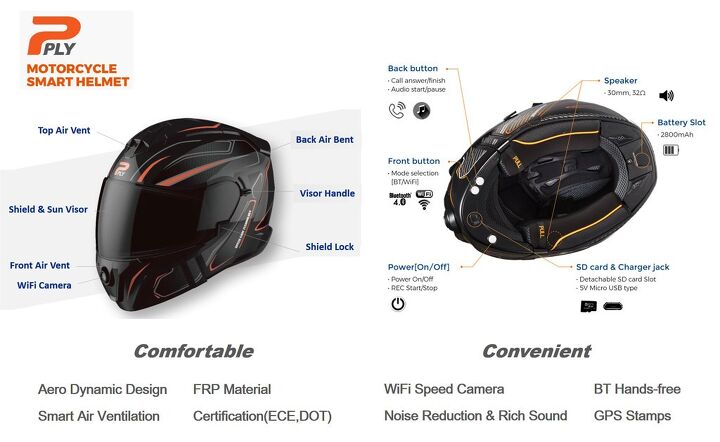
Source: motorcycle.com
Infrastructure Improvements
North Las Vegas is making strides in improving infrastructure to enhance motorcycle safety. These upgrades range from improved road surfaces to enhanced signage and motorcycle-friendly traffic systems.
One exciting development is the implementation of more motorcycle-friendly road markings at intersections. These high-visibility markings help alert other drivers to the presence of motorcycles, particularly in blind spots or areas with limited visibility.
The city is also exploring the use of acoustic detection systems to improve traffic light responsiveness to motorcycles. This technology can detect the unique sound signature of a motorcycle and trigger a light change, addressing the common problem of motorcycles being too light to trigger traditional in-road sensors.
Another interesting development is the testing of new guardrail designs specifically aimed at reducing injury severity in motorcycle collisions. Traditional guardrails can be particularly dangerous for motorcyclists, so these new designs could be a significant safety improvement.
Dedicated Motorcycle Lanes
The concept of dedicated motorcycle lanes is gaining traction in some areas. While not yet widespread in North Las Vegas, it’s an idea worth keeping an eye on. These lanes, where available, can offer a safer riding environment by segregating motorcycles from larger vehicles.
If you encounter a dedicated motorcycle lane, it’s crucial to use it correctly and be aware of its limitations. These lanes are typically narrower than standard lanes and often have special entry and exit points that riders must be cognizant of.
Some dedicated lanes may have speed restrictions or other specific rules. Always pay attention to signage and be prepared to adjust your riding accordingly.
Community Awareness Programs
Local initiatives aimed at increasing motorist awareness of motorcycles on North Las Vegas roads are playing a crucial role in improving safety. These programs educate both riders and drivers, potentially reducing accident rates.
North Las Vegas runs annual “Look Twice for Motorcycles” campaigns, which remind drivers to be extra vigilant in checking for motorcycles before changing lanes or turning. These campaigns often include billboards, radio ads, and social media outreach.
Local rider groups frequently organize safety workshops and group rides to promote awareness. These events can be a great way to improve your skills, meet other riders, and contribute to a culture of safety on our roads.
Some insurance companies are even offering discounts for participation in approved safety courses. It’s worth checking with your insurer to see if you can save some money while improving your skills and knowledge.
To better understand the legal aspects of accidents and injuries, especially those involving head trauma, take a look at our comprehensive guide on brain injury settlements.
Navigating the aftermath of a motorcycle accident in North Las Vegas can be overwhelming, especially when dealing with legal and insurance issues. That’s where Ultra Law comes in. Our team specializes in motorcycle accident cases and understands the unique challenges riders face.
We offer a free initial consultation to discuss your case and explain your rights. Our attorneys work on a contingency fee basis, meaning you don’t pay unless we win your case. We’ll handle all communications with insurance companies, gather evidence, and fight for the compensation you deserve.
Don’t let the complexities of motorcycle accident claims overwhelm you. Reach out to Ultra Law today and let us help you get back on the road to recovery.
Key Learnings Recap
Let’s recap the crucial points we’ve covered:
- Stay up-to-date on North Las Vegas motorcycle laws and insurance requirements
- Take immediate action after an accident: prioritize safety, document everything, and seek medical attention
- Understand the nuances of dealing with insurance companies and legal proceedings
- Embrace emerging safety technologies and community awareness programs
- Don’t hesitate to seek professional legal help when navigating complex accident claims
For additional resources on accident claims, check out our Bicycle Accident Settlement Calculator.




